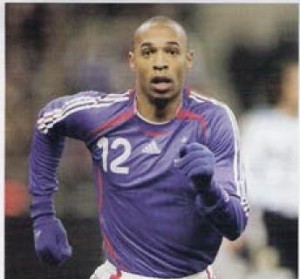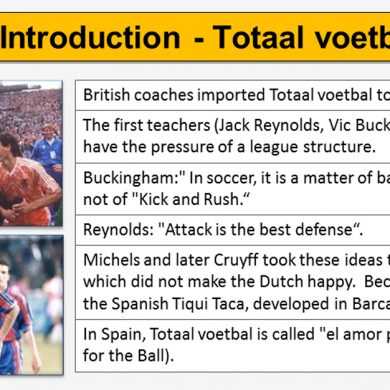
“Being able to run fast in straight lines only, or having the capacity to Lift very heavy weights in the gym, will not necessarily transfer onto the football pitch”
Over the next four issues of Total Youth Football Speed Coach, Mike Antonlades, will examine the long term development of young footballers, focusing specifically an football motor development and speed. Explaining the theory, training methodologies, training advice and coaching drills for developing football coordination, agility and speed.
Mike will help your payers to pick up their pace. But what exactly is speed and how can you develop it?
Mike explains a few of the basics.
What is football speed?
Many coaches and trainers believe that speed is something you are born with rather than a skill you can develop. Genetics is a very important factor and does make a difference to the make up and shape of athletes and their capacity to become stronger and more powerful. But strength and power are only two components of speed. They will assist in how fast you can run in a straight line, but in a multi-directional sport like football, being able to tun fast in straight lines only, or having the capacity to lift very heavy weights in the gym, will not neoessarily transfer an to the football bitch in terms of speed.
 Football speed is a skill and just like any other skill it can be taught, it can be developed, and it can be improved through a systematic and progressive training approach.
Football speed is a skill and just like any other skill it can be taught, it can be developed, and it can be improved through a systematic and progressive training approach.
Coaches and parents of young footballers, although they have the best interests of their children at heart, are usually just copying training drills or methodologies that they hear about or see the professional teams doing and in many situations these are detrimentel to the football and physical development of the youngsters.
Many professional football clubs have used specialist sprint coaches, whose background is track and field, to improve the speed of the players, but the biomechanics of straight line sprinting is different to the multi-directionar speed required in football. Practicing straight line sprinting continuously will improve a players conditioning, but it has very little functional benefit for a multi-directional sport like football.
Why?
Because full-out sprinting in a football game only makes up about one per cent of the total movement in a 90 minute game! You may ask, is the ability to run fast over 50 metres not important? Of course it is, but let’s put it into perspective.
“Football is a multi-directional, explosive Sport where there is a change of movement every four seconds”.
As I’ve said a couple of times already, Football is a multi-directional, explosive sport where there is a change of movement every four seconds. There is little benefit in football players spending too much time on drills which develop maximum straight line velocity when they would benefit more from shorter multi¬directional explosive training using the ball.
So, focusing an football specific movernents and individual technical skills is far more beneficial to the development of the young footballer.
How do you develop football speed?
In most football clubs whether at youth, amateur or professional level, there is no effective teaching of speed. There are many different ways of approaching the structure of speed training, but even today with all the modern coaching methodologies and available knowledge and research, speed training is coached as part of fitness and in many cases it is counterproductive to the development of football speed.
No consideration is given to the relationship between functional movement, the neuromuscular system, the energy systems, the type of speed required for the sport, the effect of the training on young athletes, recovery periods and other influencing factors.
Age is one of the most important factors. Coaches must remember that children are not mini adults and cannot train in the same way.
Scientifically it has been proven that strength is determined by developing the muscular system. Endurance is deterrnined by the carcliovascular system.
Speed, meanwhile, is determined by the nervous system and coordination.
There are THREE KEY POINTS to remember when developing football speed:
1. The optimal training period for developing speed
2. Training the neuromuseular system, when and how can this be done?
3. Training football-specific speed
Did you konw?
- 65% of footballers over the age of 12 are slower turning on one side than the on the other, by up to o,85 of a second.
- Many young footballers can improve their speed and quickness just by correcting their running biomechanics.
- Reactive speed can be improved by up to 3o% with the correct training in just four weeks.
- If youngsters acquire the basic movement skills by the age of 13 then they will very rarely make professional footballers.


